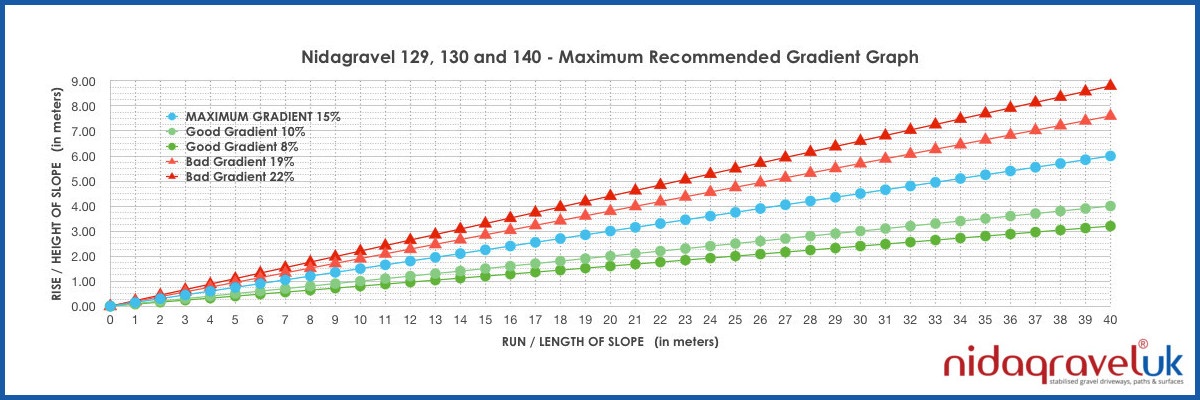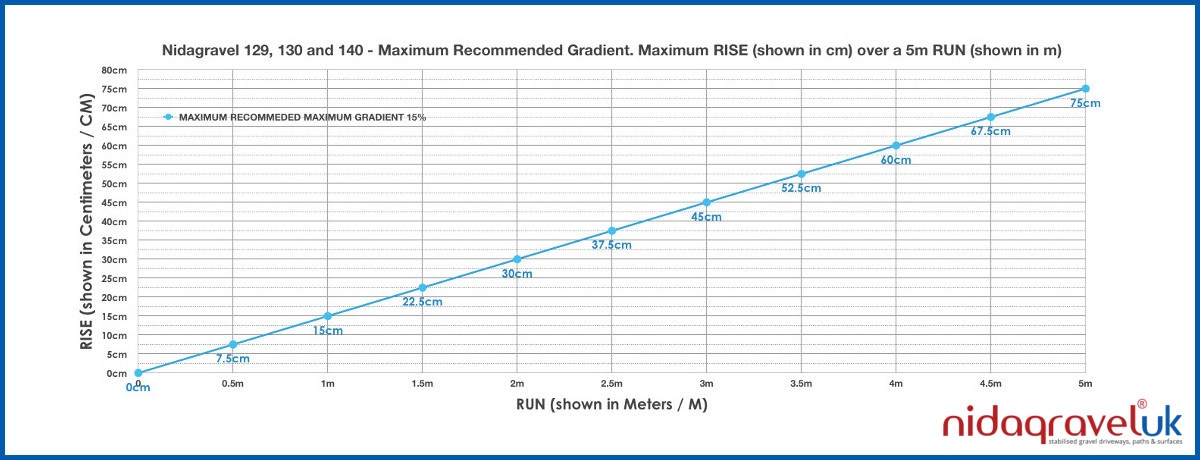Gravel Stabilisation Grids On A Slope
 STABILISING SLOPING GRAVEL DRIVEWAYS WITH NIDAGRAVEL GRAVEL GRIDS
STABILISING SLOPING GRAVEL DRIVEWAYS WITH NIDAGRAVEL GRAVEL GRIDSStabilising gravel on a sloping driveway is made easy with Nidagravel gravel stabilisation grids. In fact, stabilising gravel on any sloping surface is made easy with our honeycomb gravel grids. Until now, using decorative gravel for a sloping path or driveway surface has been problematic, to say the least, but not anymore, with Nidagravel gravel retention grids you can effectively stabilise a gravel slope and prevent gravel rolling downhill and ending up in a pile at the entrance of your driveway - sound familiar? Not only this, but Nidagravel gravel grids will prevent potholes and ruts forming in your gravel surface and make using your gravel driveway effortless - what more could you ask for?

THE PROBLEM - How to use gravel successfully on a sloping path or driveway?
There are three main problems that arise when gravel has been laid in the traditional way on a sloping gravel driveway (ie. a gravel surface dressing laid directly on top of the sub-base material) these are as follows:
Problem 1 - Gravel migration
What tends to happen in a majority of cases, when gravel is laid directly on a slope without using a gravel stabiliser, is that the gravel migrates towards the bottom or lowest part of the slope after a period of use. This is more of a problem with gravel driveways or slopes which are used by vehicles. The gravel that has migrated to the bottom of the driveway then becomes harder to drive or walk over as the gravel becomes deeper and less stable. This deep section of gravel then migrates again across adjacent surfaces with more pedestrian and vehicular use. This gravel migration can be made worse by the type and size of gravel used. A larger 20mm rounded river or pea gravel is likely to migrate much further than a smaller 10mm angular gravel or chipping. The entrance to the gravel driveway or the start of the slope is now beginning to look a mess with the loose gravel having spilled out of the entrance. This loose gravel is then either ground into other surfaces, such as a tarmac road surface, or crushed under the weight of a vehicle against the road or pavement.
Problem 2 - Loss of surface gravel dressing
Gravel migration results in loss of gravel from the driveway or slope, which exposes the sub-base material. In order to keep the surface looking as it should, more gravel needs to be added and spread over the surface to replace the lost gravel and the cycle of gravel migration and loss of gravel starts again. This becomes a long-term maintenance issue that will keep repeating itself. Ultimately, gravel slopes and driveways can only be topped up so many times, before the whole section needs to be removed and re-installed properly.
Problem 3 - Development of ruts and potholes
The combination of gravel migration, loss of gravel, and exposure of the sub-base material can lead to ruts and potholes developing in the sub-base. Rainwater that washes down the slope, especially in heavy downfalls, can start to scour the surface of the sub-base and wash out some of the finer particles and this can also contribute to the formation of ruts and potholes. With vehicles continuing to pass over the same sections of the sloping driveway, the problem is made worse over time. Simply adding more gravel will not cure the problem, the potholes and ruts need to be filled in with more sub-base material, re-graded and compacted, before re-applying the surface dressing of gravel. This does not cure the problem in the long run either, because the same issue will keep recurring, invariably in the same places on the slope.

THE SOLUTION - Use Nidagravel gravel stabilisation grids to keep gravel in place permanently!
The solution to the problem of loose gravel sliding down a sloping driveway is to stabilise the gravel slope using Nidagravel gravel stabilisation grids. The Nidagravel cellular gravel retention system is comprised of large-format panels of plastic, hexagonal cells, backed with a membrane that holds gravel in place. Nidagravel grids are laid over the prepared sub-base and cut to fit the required area. The honeycomb structure of the gravel stabilisation grids holds the gravel in place permanently within the matrix of hexagonal cells. The thousands of individual cells prevent gravel migrating, prevent the loss of gravel and prevent ruts and potholes from developing. In addition to successfully solving the problem of using gravel on a slope - Nidagravel honeycomb grids provide a much more stable gravel surface that is firm underfoot, making the gravel slope easier to walk across, a gravel surface that is wheelchair friendly and easy to push a pram or bike over. Nidagravel grids enable high-quality, long-lasting gravel surfaces to be created that are easy to maintain.
Maximum recommended slope gradient for using Nidagravel honeycomb gravel stabiliers

The graph above shows the maximum recommended gradient of 15% with acceptable gradients shown in green and excessive gradients shown in red.

The graph above shows a simple example of the maximum recommended gradient over a 5m run with rise heights shown in centimeters (cm).
NIDAGRAVEL MAXIMUM RECOMMENDED GRADIENT
Expressed as a Percentage: 15%
Expressed as a Ratio: 1:6.67 or 1 in 6.67
Expressed as a Degree: 8.53 degrees
Expressed as a Fall (mm): 150:1000mm
Expressed as a Fall (cm): 15:100cm
Expressed as a Fall (m): 0.15:1m
NIDAGRAVEL GRADIENT CALCULATOR
Use our simple gradient calculator below to work out the gradient of your slope.





